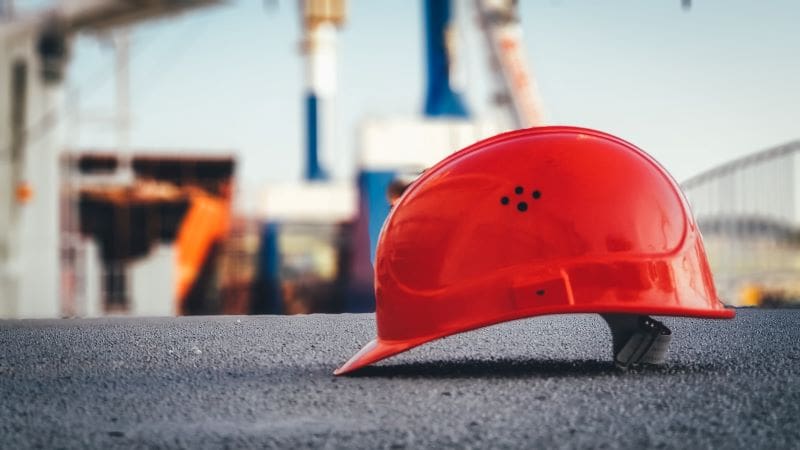Thanks to oil and gas technology, worker safety and employer visibility are steadily improving. For instance, a manager could review an oil field digitalization platform and see accident-related trends. That information could help them determine which process improvements to focus on that will lead to the most progress. Together, digitalization and data analysis efforts can reduce accidents, keep communities and workers safer, and cut emissions. People can use these technologies in several compelling ways.
1. Improve Location Awareness and Evacuation Procedures
Oil field emergencies can happen in seconds, so all workers must get thorough training about what to do when those situations arise. However, it’s also critical that managers can verify whether all employees have escaped the catastrophe and made it a designated meeting point. Unfortunately, if a worker gets injured or passes out because of whatever’s happening, they may be incapable of alerting others to their distress. By the time a headcount occurs and someone realizes the person is missing, their situation may have become even more dire.
A European Union-funded project called OffshoreMuster uses digitalization to prevent these situations. One of the main goals was to increase safety with automation during offshore oil emergencies. The system can show a worker’s real-time location and status, or give instant notifications of a person boarding an offshore oil platform. It also aids with evacuation management and has an electronic mustering feature. Finally, the digital tool supports person-overboard searches.
This innovation increases visibility for anyone overseeing a rescue or evacuation effort, too. For example, it can confirm if an employee entered a hazardous area before an emergency occurred. Then, rescuers know what precautions to take to reduce unnecessary risks. This advanced oil and gas technology allows it.
Each worker uses a wearable device with situational awareness capabilities and position details. However, while addressing this project’s challenges, the participants realized that an offshore platform’s metal structure can distort wireless signals. Optimizing transmission frequencies and developing protocols mitigated those issues.
After developing this tool, the participants validated its usefulness by using it at a real-life offshore oil and gas facility. They confirmed the opportunities to get up-to-the-minute details during emergencies could save lives.
2. Track Emissions With Oil Field Digitalization
Once people in the oil and gas industry identify areas with lucrative natural resources, they strategically plan oil field operations to maximize profits and get optimal results. Consider how, from the 1990s to the early 2000s, there were more than 20,000 wells drilled in Wyoming’s Powder River Basin. As those decision-makers look for the best oil field locations, they must prioritize safety for workers and people in the surrounding communities.
Emission-tracking efforts are one way to do that. However, a longstanding problem is methane is notoriously difficult to monitor. Many people believe total emissions are significantly underreported because of that reality. The MethaneMapper project from UC Santa Barbara could change that. People are using it at the Permian Basin — an oil and natural gas extraction site located in New Mexico and Texas.
At the heart of MethaneMapper is a hyperspectral imaging tool that uses artificial intelligence to track real-time emissions and trace them to their sources. The researchers also created sets of data encompassing nearly 4,000 emissions sites elsewhere. This oil field digitalization project keeps those working in oil fields safer, but it also reduces pollution and the associated ill effects on humans and wildlife.
Plus, if decision-makers have reliable data about their operations’ emissions, it’s easier to identify areas for improvement or see if the information is near what’s acceptable for the industry. This application of oil and gas technology can alert the relevant parties to significant issues, too.
One of the people working on the MethaneMapper project brought up a case where an oil rig off the coast of Mexico emitted 7,610 kilograms of emissions per hour for six months before someone realized the problem. Real-time oil field digitalization data prevents such instances.
3. Supporting Process Improvement
Some leaders can get too set in their ways and only feel prompted to change if major patterns emerge to show it’s necessary. For example, recurring safety issues could push an executive to budget for new oil and gas technologies, or look for current workflow shortcomings. Sometimes, it simply becomes evident that high-tech improvements could improve how people do their jobs.
Such was the case when an oil field services operator in the Middle East invested in hands-free augmented reality technology that attaches to a hard hat. This setup complements — and sometimes eliminates — a tablet people use to access real-time information to improve their work. This technology also allows users to connect with subject-matter experts, which is especially helpful to those new to the job.
Since people can use this oil field digitalization technology while keeping their hands free, they can work more efficiently and make fewer errors when handling maintenance and repairs. The built-in voice-controlled technology also works well in noisy environments, making it ideal for field work.
The trial results indicated this oilfield digitalization effort reduced people’s reliance on physical paperwork. Plus, users achieved gains of more than 75% in productivity, safety and operational efficiency. Leaders must think carefully about the most accessible and appropriate ways to enhance processes. They must also realize people need time to adapt to new work methods, meaning executives don’t see the anticipated results for a few months after implementing solutions.
Oil and Gas Technology Is Becoming Advanced
These are only some of the many ways high-tech improvements can increase safety in an industry with many inherent dangers. However, even the most innovative products cannot replace comprehensive safety training and appropriate gear. It’s also important to get feedback directly from workers.
Ask them how they’d feel about using oil and gas technology and if they have any hesitations. Being open about hearing their thoughts and working through any difficulties will make them feel respected. Finally, leaders should choose and monitor metrics that indicate whether oil field sites are becoming safer or use data analytics in meaningful ways. Doing that will show if executives are on the right track or need to alter their current approaches.
Emily Newton is the Editor-in-Chief of Revolutionized, an online magazine discussing the latest industry innovations and trends.






